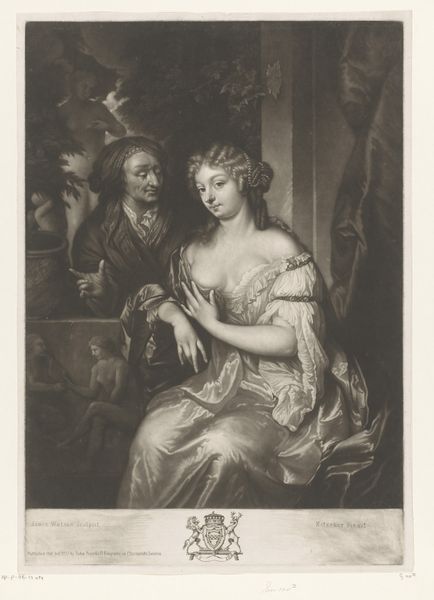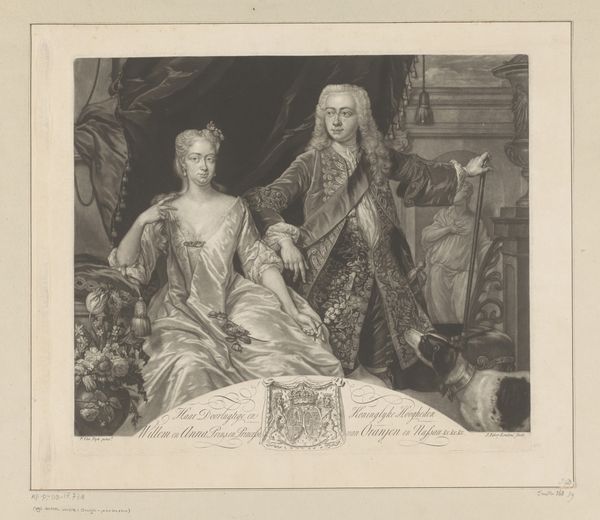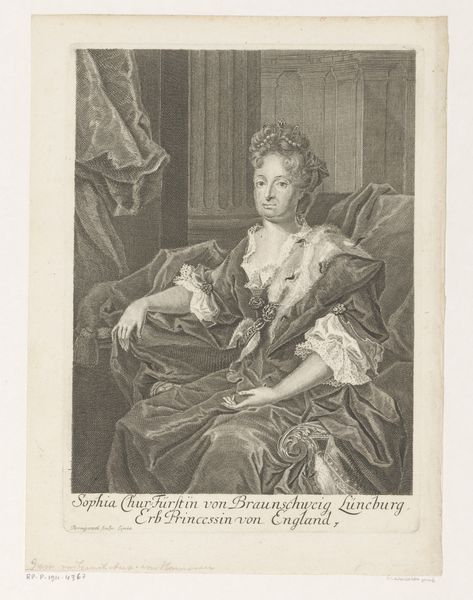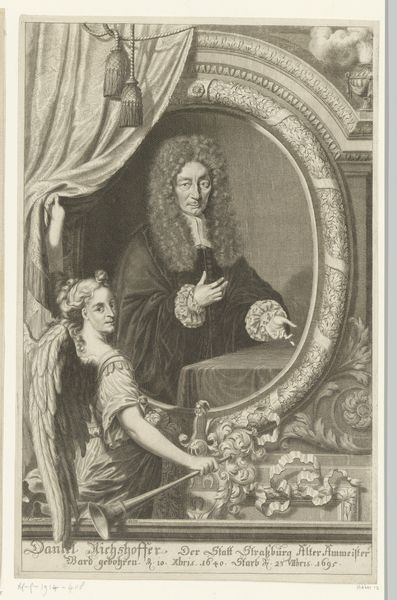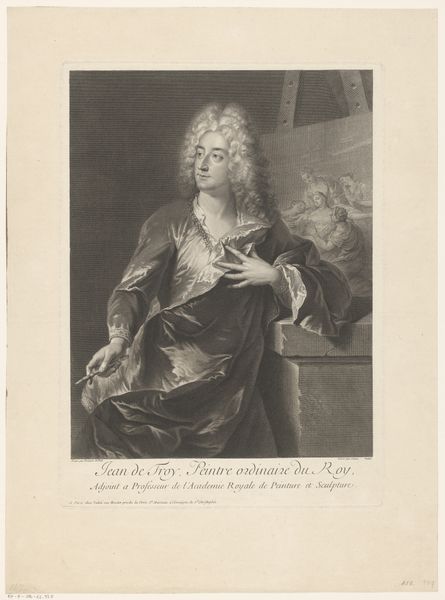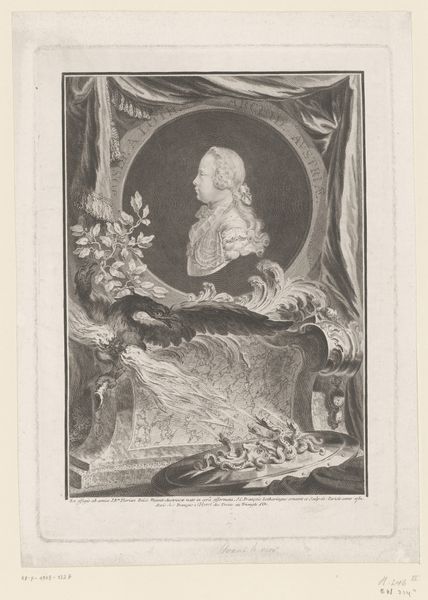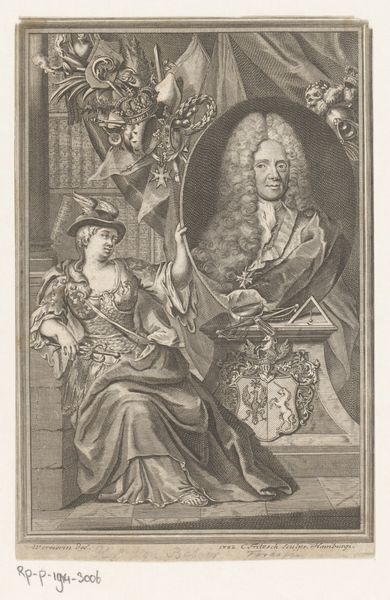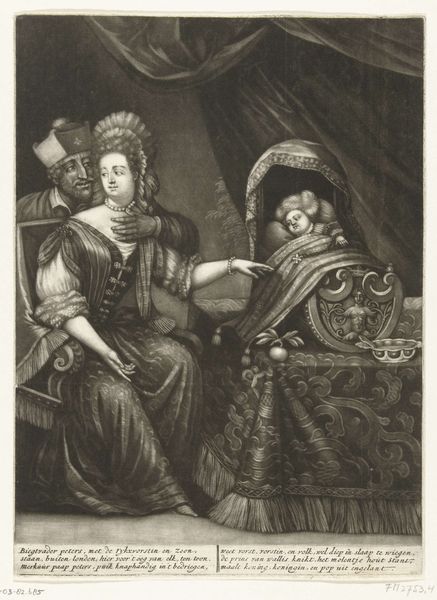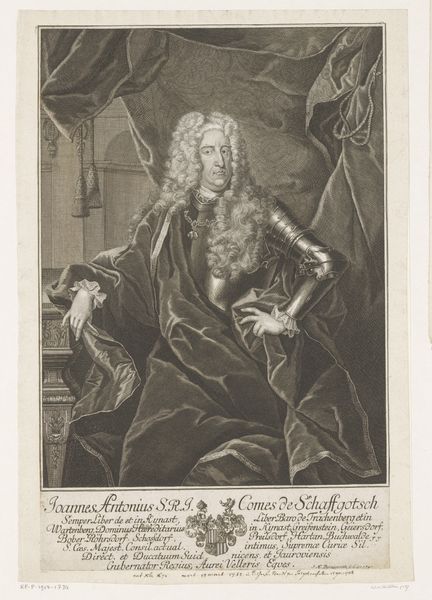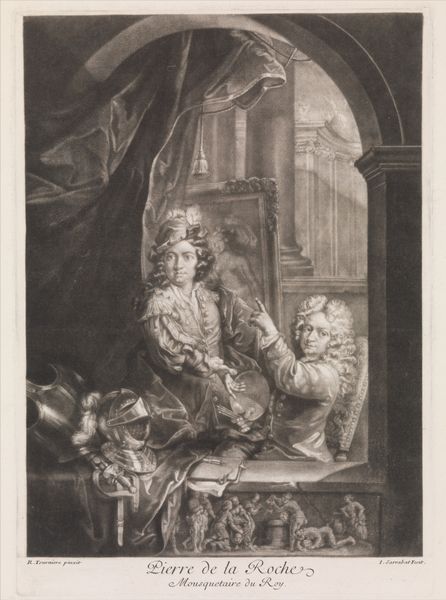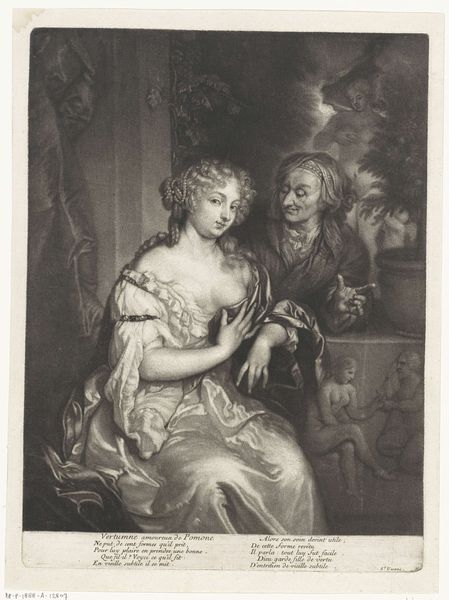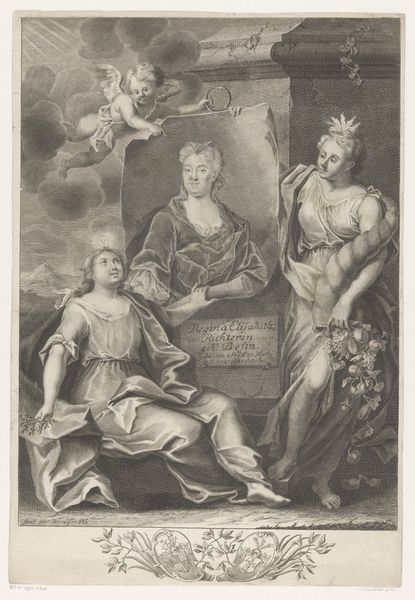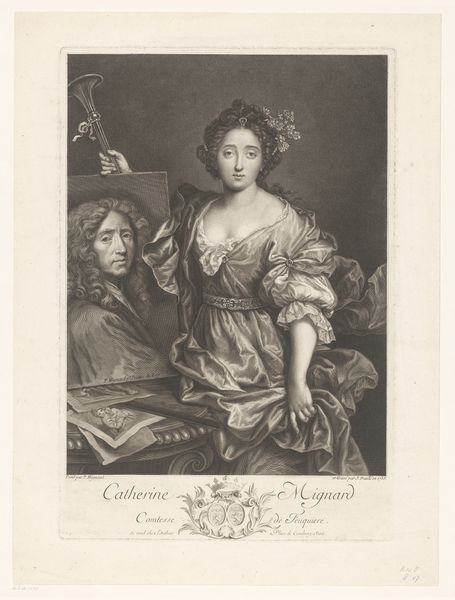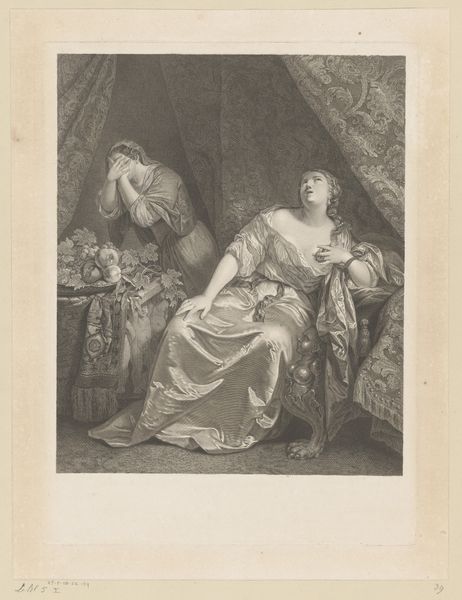
engraving
#
portrait
#
baroque
#
charcoal drawing
#
archive photography
#
historical photography
#
history-painting
#
engraving
Dimensions: height 330 mm, width 392 mm
Copyright: Rijks Museum: Open Domain
Curator: This is an engraving dating from the late 17th century, sometime between 1690 and 1693. The title identifies the sitters as John Maitland and Elizabeth, the Duke and Duchess of Lauderdale. Editor: My initial impression is that it's very theatrical, almost staged. The heavy drapery, the posed figures...it speaks of status, but also of a certain artifice. It makes me want to touch it. What material is it exactly? Curator: Engraving. Look closely, you can see how the lines articulate not only form but also texture. We must remember that this portrait emerges from a specific historical milieu; consider the power dynamics at play in the late Stuart period. John Maitland was a powerful figure in Scottish politics, a man closely allied with Charles II. Editor: Exactly! You can almost smell the ink, and see the marks of the engraver’s tools. Those pearls are all uniform, repeated, rendered in the same fashion. There is an interesting parallel in the manufacturing of the work and in the portrayal of the people displayed in it. Curator: Note, too, the ways in which gender and class are constructed visually. Elizabeth, the Duchess, is rendered as elegant but passive, while the Duke exudes authority and control. These aren’t just individual likenesses, but embodiments of their social roles and power within a patriarchal society. It is important to acknowledge Lauderdale's role in repressing dissent during the Killing Time in Scotland and the position Elizabeth occupied within that reality. Editor: So, even in an era defined by elaborate court rituals and dress, an image like this reveals the processes that underpin them. I suppose that even if we see them as archetypes, we have to recognize how their clothing, jewels, and setting are made manifest by the very concrete act of engraving the copper plate, the labour involved to depict that type of luxury. Curator: Precisely. These representations both reinforce and naturalize existing hierarchies. The engraving captures a moment, a performance of power, and it does this using materials which themselves have complex socio-economic origins and histories. Editor: Thinking about the texture, and also the repetition, it brings into sharp focus a particular time, where craft was the primary process of manufacture. Something of their personalities comes across in this manner too. Curator: A great way to put it. This reminds us to delve below the surface—not just to admire but also to investigate and to consider. Editor: It all ties into what’s involved in creating and preserving that particular vision of luxury and the image those processes leave behind.
Comments
No comments
Be the first to comment and join the conversation on the ultimate creative platform.
